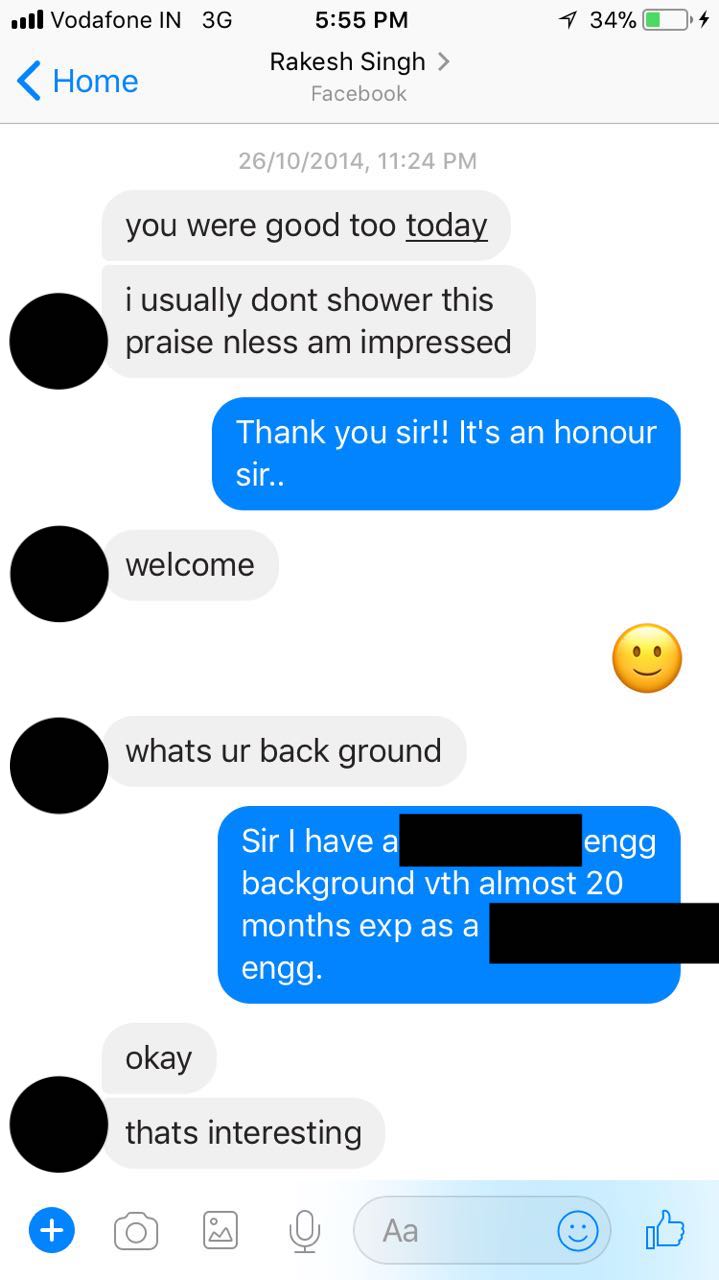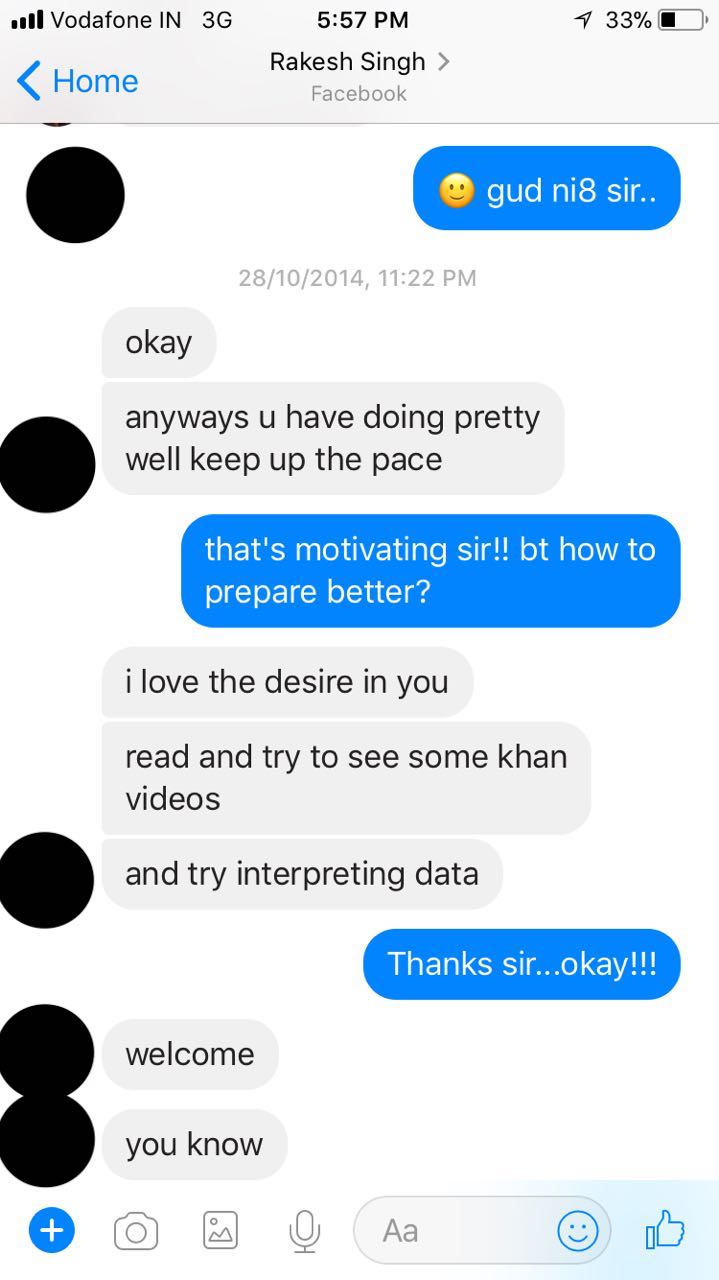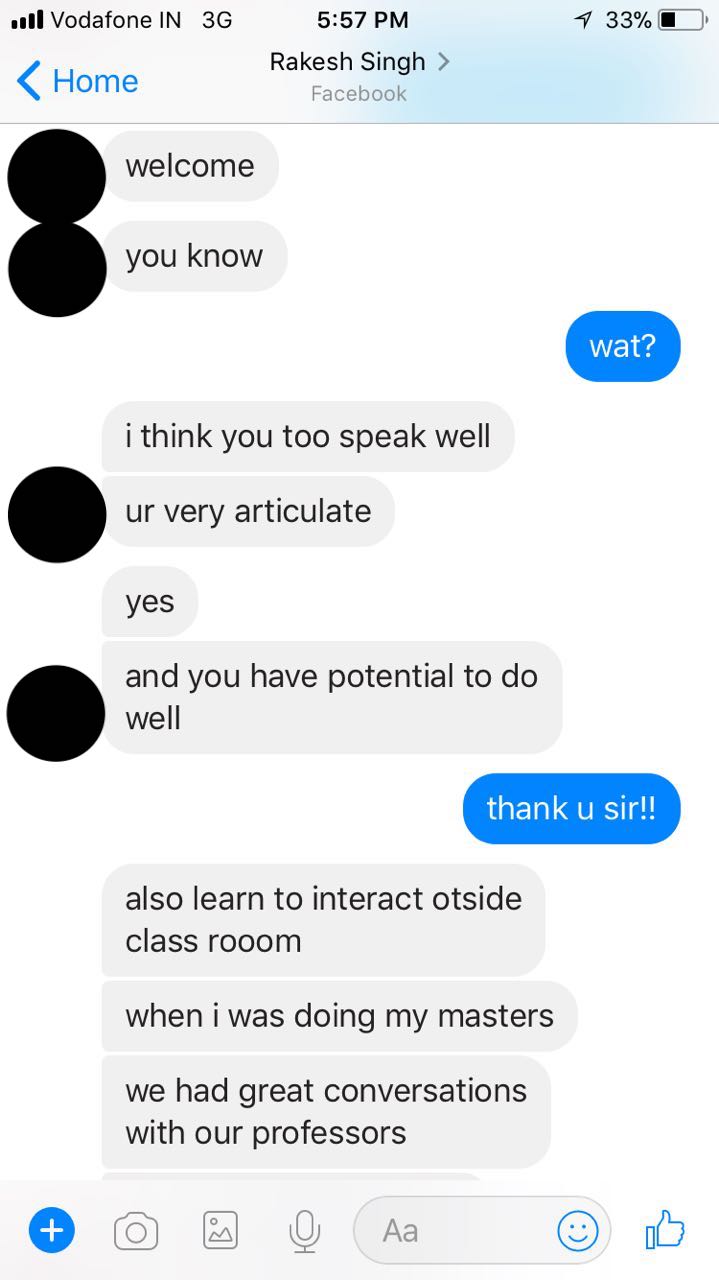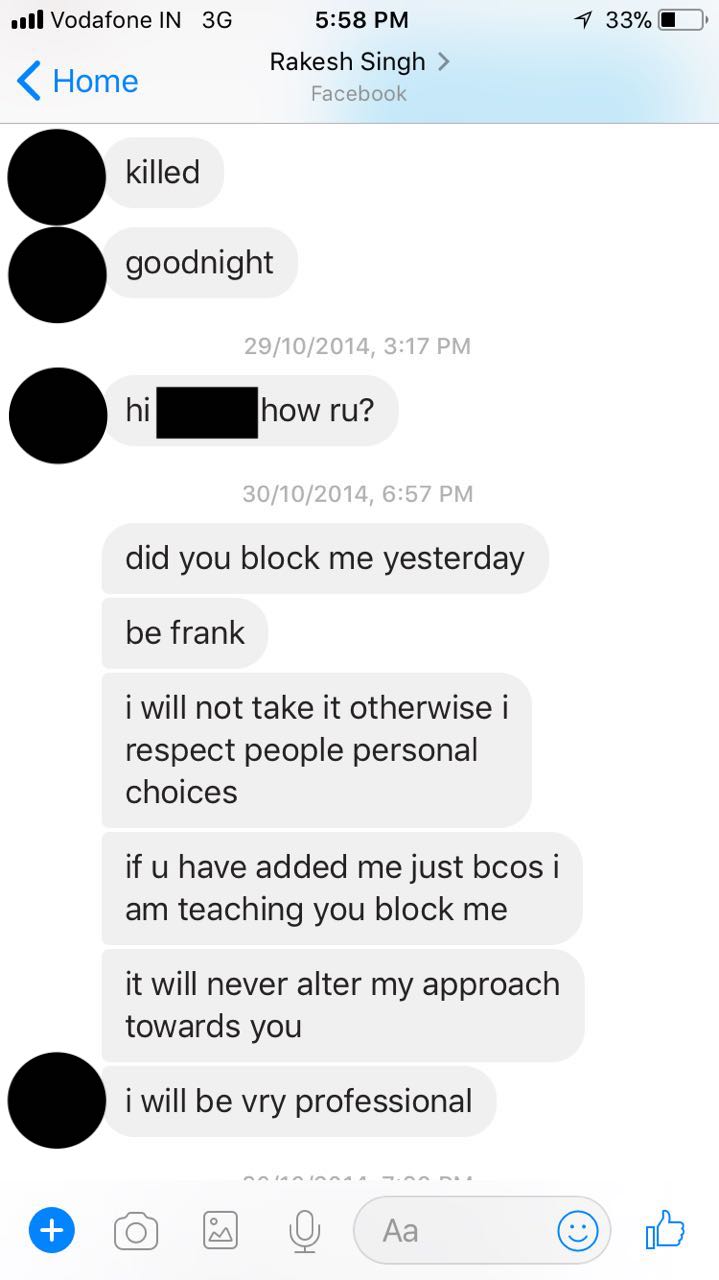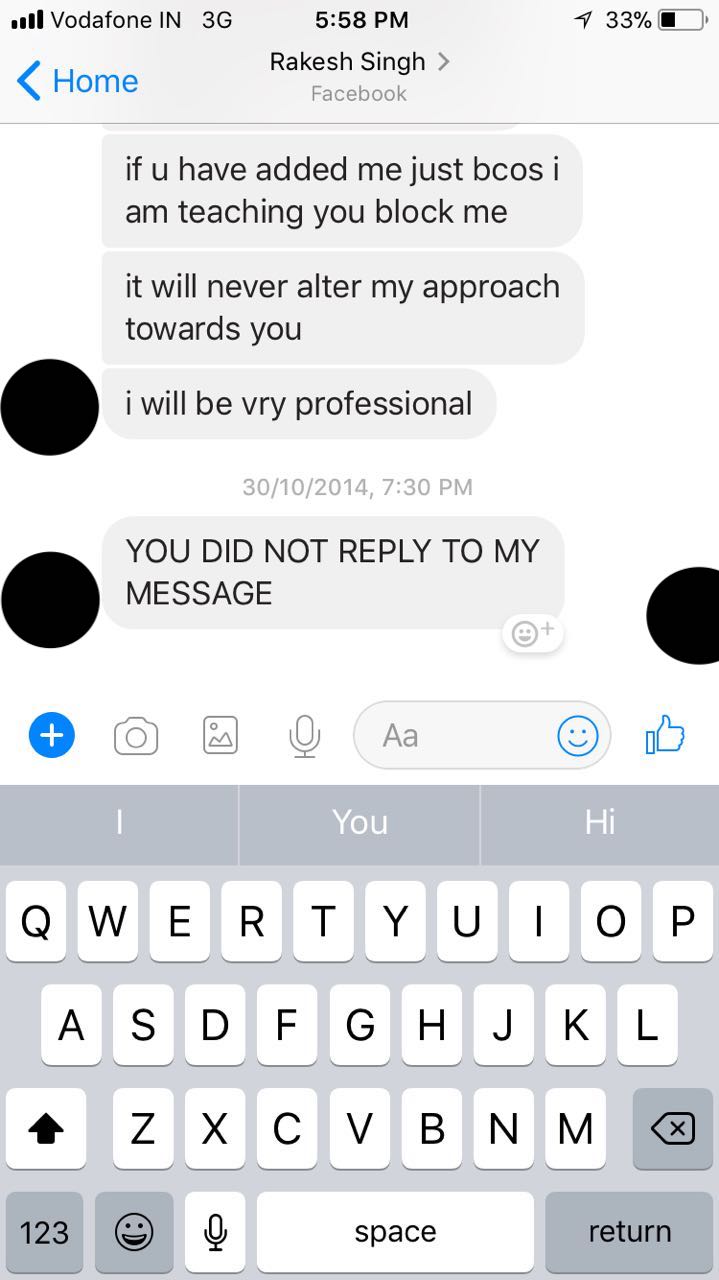![A publicity picture of the Great Lakes Institute of Management used as a representative image.]()
Years before a senior professor of economics was found guilty of sexual harassment by a committee set up by the Amity University in Panvel and asked to resign, he continued to teach at a top management institute in Chennai as a visiting professor despite similar complaints against him by women students three years ago, several students of the institute told HuffPost India.
Not only did the top authority at Great Lakes Institute of Management not suspend Dr Rakesh Singh immediately after two women students formally lodged complaints of sexual misconduct with the dean in 2014, they let him finish his pending lectures, knowing full well that it would bring him in contact with his victims, and even allowed him to return to the campus to teach a later batch when the heat died down.
It's a telling case of how Indian educational institutions deal with sexual violations, choosing immediate image management over long-term action against perpetrators to make women feel safer on campus. At a time when women are breaking their silence on sexual abuse in some form or another, the incidents of 2014 are a reminder of the power men in influential positions hold over women who come forward to report abuse. It's also speaks of the lack of seriousness with which women who accuse authoritative figures of sexual transgressions are treated in our country.
One of the students who complained against Singh told HuffPost India she felt helpless when she saw her alleged harasser back on the campus despite a formal complaint, and in at least one occasion their paths crossed within the campus. She said she sensed a "wariness in most of the male professors immediately after her complaint".
The matter came to light when Mumbai Mirror reported that Amity's committee against sexual harassment found Singh, who was dean (academics), and Dr Kuldeep Singh Panwar, head of the department (law), guilty of sexual harassment. In a recent mail, which was circulating on alumni groups on WhatsApp, which this reporter has seen, a shocked former student of Great Lakes, who knew of the complaint against Singh, wrote to the institute's management demanding to know why nothing was done in the last three years.
"We are complicit in this, the (Mumbai Mirror) article takes pains to point out that nothing turned up when Amity conducted a background check on them (Singh and Panwar)," the student wrote.
"We are complicit in this, the article takes pains to point out that nothing turned up when Amity conducted a background check on them."
Singh's alleged victims told this reporter that had he faced consequences for his action in 2014, the Amity cases would perhaps not have happened. Singh, a professor of macroeconomics of considerable social standing, was a visiting professor at Great Lakes when two women students from different batches lodged the complaint against him. In the course of writing this story, at least three other women, who requested that their identities not be revealed, reported sexual misconduct by the professor during their time at Great Lakes.
"Hey beautiful woman!"
Alka Tripathy* was completing her Post Graduate Diploma In Management (PGDM) from Great Lakes in 2014 when, inspired by Singh's knowledge of his subject and motivated by his interactive lectures, she decided to join a Facebook group he had created to discuss work. Like most students of her class, she too had sent Singh a Facebook friend request, which he accepted. Though she didn't expect him to actually interact with her on Facebook, Singh struck up a conversation late one night in October, 2014. He complimented her on her grip of her subject and said she articulated well. She thanked him and said it was motivating.
"I love the desire in you," Singh wrote. "Also learn to interact outside classroom, when I was doing my Masters we had great conversations with our professors," he wrote.
A couple of days later, late October 2014, she was heading to the library, when she heard someone call out: "Hey beautiful woman!" Not understanding that it was her who was being addressed, she said she didn't bother to turn around.
"Hearing that call again, I turned around and saw professor Singh pointing at me. I was shocked. He is my professor. Nothing gave him the right to address me such. But I didn't say anything. He walked up to me accompanied by his teaching assistant and told him 'she is one of my brightest students in my class'. I took that as a friendly gesture," Tripathy said.
Singh asked her to take a stroll with him. During the stroll, he initiated a conversation about sex that made Tripathy uneasy.
"He discussed sexuality and spoke of the need for Indians to liberate their sexual expression. Time and again I kept telling him that I needed to go back to my hostel."
"He discussed sexuality and spoke of the need for Indians to liberate their sexual expression. Time and again I kept telling him that I needed to go back to my hostel. He insisted that we complete the walk. He started talking about Osho, his personal life, and asked if I had read 50 Shades Of Grey. I hadn't. He started discussing aspects of the book – how humans perceive sex, and how in India people are not adventurous sexually," Tripathy said, adding that she was getting increasingly uncomfortable with the discussion and was looking for a chance to leave.
50 Shades Of Grey is an erotic book by author EL James exploring a sadomasochistic relationship between a young woman and a business tycoon. Osho was an Indian godman known, among other things, for his unconventional views on sexuality.
"He then took out his mobile phone and showed me a graphic picture of two people having sex."
"Just when I was about to leave, he said there's a professor in Wisconsin writing a book on the LGBT community. He then took out his mobile phone and showed me a graphic picture of two people having sex."
At that point a flustered Tripathy curtly told him that she had to leave.
Tripathy said she did not want to have a sexual conversation with her professor. She wasn't asked if she could be shown the sexually explicit image. The experience left her shaken. She said she felt angry that despite scoring the marks needed to qualify for the course, fighting privileges handed down to men at academic and professional spaces, studying hard while living away from home and standing out in her class as a diligent student, she was reduced to just a woman with whom a professor thought he might strike up a conversation about sex.
The days following the walk played out like a phase of a bad dream.
Where once she was cheerily participating in mock debates in Singh's class and parrying questions, she became withdrawn, afraid that any show of eagerness would draw attention towards her and lead to another off-class sexual conversation she said she did not want. She did not raise her hand to answer questions. She tried her best "not to stand out".
Gradually her batchmates came to know of this incident. Singh's last lectures were always received with a standing ovation, it had become a custom at Great Lakes. That year the students decided to break custom in solidarity with their classmate.
"We took a vow that we wouldn't give him a standing ovation. I didn't care if he gave me a C in my assignment," she said. She blocked him on Facebook. Singh asked her if she had blocked him and said he "will not take it otherwise". He respected people's personal choices, he wrote. But when she did not respond, he accused: "YOU DID NOT REPLY TO MY MESSAGE".
![]()
![]()
![]()
![]()
![]()
She kept thinking about the incident and a month later she decided, with the help of two student council members, to lodge a formal complaint.
Finally, a complaint
She was accompanied by Arvind Viswanathan, then a member of the student council at Great Lakes, and another woman member from the body mandated to look into student welfare. The council was armed with another complaint — lodged by a woman with whom Singh allegedly had another inappropriate chat — the transcript of which Tripathy said she had seen.
"At least five women had discussed feeling uncomfortable by Singh's behavior but none wanted to come forward. We took these two complaints to Programme Director Bobby Srinivasan and then to Associate Dean Dr Vaidy Jayaraman. I made it abundantly clear that students won't stand for this professor's behavior," Viswanathan told this HuffPost reporter.
"The AD requested that Singh be allowed to finish his lectures. This was November 2014. Within the span of a day we also spoke to the dean (Dr Bala V Balachandran)," he said. They were assured that Singh would face an inquiry and would be taken off the programme.
Despite the assurance, the atmosphere, Viswanathan said, didn't exactly seem amiable. "My classmate had backed out by then, and I don't blame her, and the junior had had to tell her story for the third time," he said.
To the surprise of the women who complained, and the student council members who fought for action, in February of 2015 Singh was seen on campus allegedly teaching a corporate programme.
"I have no words to describe how I felt. He didn't have to say it. But it was as if our complaint didn't matter."
"I have no words to describe how I felt. He didn't have to say it. But it was as if our complaint didn't matter. He was back on campus. Gradually the conversation between some of my classmates also shifted. I heard some of them saying that it could not just have been Singh's fault. That I must have led him on. I sensed wariness in some of the male professors when they spoke to me. I felt I was labelled as the woman whom you had to be very careful while talking to otherwise she'll report you for sexual harassment. That there was some scope of me misunderstanding the whole situation. Some of my classmates interacted with him as if nothing had happened. They walked up to him and asked for career advice," Tripathy said.
She said Singh was allowed to finish his lectures, and at least once they came face to face while coming out of a class, months after she had complained about him.
"None of the women professors came forward to support us, and as far as I know no sexual harassment committee was formed immediately after the complaint, otherwise the incident would have been investigated and I would have been asked to depose. I wasn't. We ourselves had to identify other victims of harassment to make our case stronger. The dean could have said 'enough is enough'. My college was not able to protect me," Tripathy said.
Mails, mobile text messages and calls to Singh since 16 January seeking his response to the allegations levelled against him by his students went unanswered. On 17 January Singh sent a WhatsApp message to this reporter saying he'll respond within 24 hours. At the time of publishing this, three days after Singh messaged this reporter, his response had not come in yet.
In the months following the sexual harassment complaint, Viswanathan reportedly wrote to the AD again asking why Singh was back on campus despite the allegations levelled against him. He was allegedly told that Singh has been instructed not to talk to any student from his batch.
"What struck me about the Amity story was that they didn't do a proper background check on Singh. What upsets me is Great Lakes' responsibility extended to protecting all students and not just their own."
"By then my mails were getting heated and I was told that they didn't appreciate my language. Singh didn't teach the 2014-2016 batch anymore. But I asked around, he definitely taught the 2015-2017 batch. What struck me about the Amity story was that they didn't do a proper background check on Singh. What upsets me is Great Lakes' responsibility extended to protecting all students and not just their own," Viswanathan said.
As soon as former students saw the Mumbai Mirror story, alumni groups were abuzz with discussion. Former women students shared their own stories of a distinct pattern of inappropriate behaviour some of them had faced.
Late night Facebook messages
A former student, Rohini Bharghav* from the 2011-2012 batch told HuffPost India that Singh used to send her late night messages on Facebook. "Nothing beyond 'hi' or 'hello' but I could sense this could lead to something else. I used to avoid responding. Most of the messages were sent really late at night. Even when we graduated, on and off he'd send the same messages," she said.
Another former student Neha Bose* from the 2011-2012 Post Graduate Programme in Management spoke of similar late night messages from Singh on Gchat.
"He used to ping me late at night, at 2-3 am, 'why are you up, how's it going'. When he saw me online he'd ask 'who are you talking to this late at night?' I would try to steer the conversation from personal to professional and ask how the placement situation was. He would ask 'do you feel lonely?' I'd avoid answering," Bose said.
Three months after she graduated from Great Lakes, he pinged via Facebook messenger one day asking 'how's life'. When she replied, he launched into a conversation about 50 Shades Of Grey.
"He wanted to discuss sex. I avoided the discussion completely knowing that it could be interpreted as encouragement. I just ended the conversation," Bose said. "That's the last time I spoke to him. I blocked him on Facebook. I would ignore his chat requests."
The women this HuffPost India reporter spoke to, all accused Singh of allegedly repeating this pattern of texting after hours and veering off topic into the personal, despite a lack of reciprocation, though maintaining complete decorum in class. In fact his students all spoke of him as a great teacher with unparalleled knowledge of his subject and a knack for making his lectures come alive.
![]()
*Revati Kumar, a former student said Singh pinged her at all hours.
"The starting point was Facebook. He used to ping at all odd hours, 11 pm, 12 am, 1 am, saying just 'hi', hoping to strike up a conversation.," Kumar said.
She added that, like most students, initially she politely replied to the 'hi's' the professor was sending, but stopped responding once the conversation took an awkward turn.
"I never bothered to reply. This went on for two years — on and off — between 2012 and 2014. It didn't deter him that he got no response," Kumar said.
This HuffPost India reporter has seen the chat transcript that consisted of repetition of the word 'hi' over a period of months at a time despite a lack of response from the student.
"Our initial chats turned suspicious when he started veering off to personal conversations like 'your DP is good'," she said.
Another former student from the batch of 2015-2016 PGPM, who spoke on condition of anonymity and knew about the sexual harassment complaint, confirmed that Singh taught their batch in September of 2015. They too had lodged a complaint about Singh, but it was for an entirely academic reason. "He used to come in, teach for 10 minutes and leave. His lack of time was really frustrating," the former student said.
"Our initial chats turned suspicious when he started veering off to personal conversations like 'your DP is good'".
They were given the reassurance that Singh won't teach on campus again.
"I know a guy from the 2016-2017 batch. Singh definitely taught them," she said. Viswanathan said he spoke to another former student who confirmed that he was taught by Singh between Jan-March 2017 for an elective subject.
Four days after HuffPost India reached out to Great Lakes for a response to why Singh was allowed to complete his lectures and return to campus, Jayaraman said: "At the time of the incident, Prof Rakesh Singh was a visiting faculty who was assigned to teach a course at Great Lakes. There was no grounds to suspend Dr. Rakesh Singh as he was a visiting faculty and merely offered his teaching services for a fixed number of hours."
Jayaraman acknowledged that Singh was asked not to talk to any student at the time of the incident.
"Dr. Bala and I met with Prof Rakesh Singh, apprised him of the situation, and let him know that the Institute will not tolerate any improper behavior. We were given an oral assurance that he will not indulge in any behavior that would place him and the Institute in poor light," Jayaraman said.
"He was directed not to talk to any student body and leave campus after completing a few more hours of the course that he was assigned to deliver."
"It was brought to our attention by student council that Prof Rakesh's behavior bordered on impropriety, immediate and necessary action was taken. He was directed not to talk to any student body and leave campus after completing a few more hours of the course that he was assigned to deliver. We also received oral assurance from him that, there will be no such cause for complaints to arise in future," he said.
"Further, terminating his service at that stage will have legal consequences and most importantly it will affect the students, as the course will have to be suspended because it would have been impossible to find any other replacement given the paucity of time."
Asserting that the institution was serious about addressing complaints of sexual harassment, Jayaraman said a staff member was asked to "submit their resignation once we ascertained that the member engaged in behavior that was contrary to the Great Lakes spirit and culture".
After the content of the mail was leaked on WhatsApp groups, the college responded with a terse warning:
"Dear Alums, it emerges that some alumni are sharing internal e-mails to outsiders. This is not advisable and discretion is required. In any case e-mails cannot be shared. Request every one to be discreet."
At the time of writing this, the GL website was scrubbed clean of any reference to Singh. His faculty page was taken down.
![]()
In 2017, when the Amity University investigation found Singh allegedly "made comments with sexual overtones and tried to make physical contact with an employee", registrar Ravi Manuja told Mumbai Mirror: "We did not receive any complaint about their conduct from the institutions they had worked in before joining us."
Feeling let down
Great Lakes was founded in 2004 by Dr Balachandran, a man students were asked to call 'Uncle Bala' as a mark of respect and perhaps to instill a sense of family. It is but natural that a lot of them now feel let down that despite repeated breach of the student-professor relationship by Singh, and clear reluctance on the part of the students to engage in explicit conversations with him, the college seemed completely oblivious about his conduct.
Jayaraman said at the time the complaint was lodged, the student council was "completely satisfied" with the plan of action that was undertaken by the institution. However, this claim seemed to directly contradict Viswanathan's mails to the college asking why Singh was back on campus.
"Even after reporting this man, how can the college reinstate him in the same position? If Great Lakes admin had taken a strong call, this Amity incident would not have not happened," Tripathy said.
"Great Lakes was not a party to any background check done by Amity. In fact, we came to know of his appointment in Amity only via the social media," Jayaraman said.
The college said it "formed a blue ribbon committee (the chair is a female faculty member), updated the student, staff and faculty manual, placed postings on sexual harassment issues on bulletin boards across the campus, strengthened our existing SH policy and continue to have a healthy discussion on such issues with our faculty, staff and students" after the incident.
Tripathy said she still had an emotional connect with her college and held many of its professors in high esteem.
"But students are vulnerable. It's the college's duty to protect them," she said.
(*names have been changed on the request of the students who to spoke to HuffPost India. HuffPost India is waiting for Dr Singh's response.)









